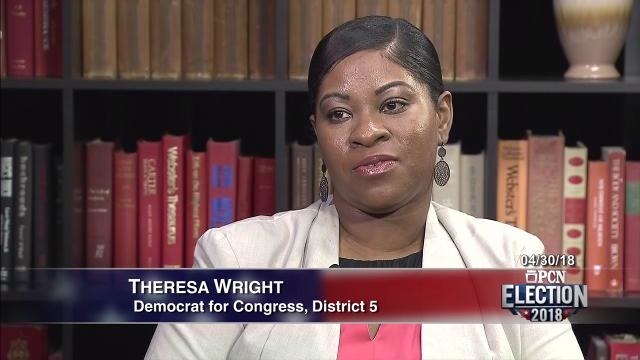The Pennsylvania Midterm Primaries Tell a Story—But Not The Whole Story—For Women

There’s plenty of fanfare about the 2018 midterm elections being “The Year of the Woman,” and there are plenty of women running in Tuesday’s Pennsylvania primaries. But as is often the case with politics, things aren’t that clear cut in the Keystone State — and the simple win-lose calculus of the vote may not be the whole equation.
A combination of unique circumstances in Pennsylvania has made this cycle attractive to women candidates, including newcomers to the electoral arena: On the federal level, district maps have been recast so as to jolt incumbents out of their comfort zones in a very literal sense. At the same time, a number of lawmakers have chosen not to run again, leaving their seats up for grabs.
Some of this turns out to be good news for the advance of women in electoral politics, says Kelly Dittmar, a scholar at the Center for American Women and Politics at the Eagleton Institute of Politics at Rutgers.
But, she cautions, the circumstances that make Pennsylvania so special politically right now also make it hard to say if the primary results will be an indicator of how women candidates will fare at large in November.
https://twitter.com/GenderWatch2018/status/996375942917427200
In some areas of battleground Pennsylvania, women are not only getting attention for taking on male candidates, but for getting into large-scale skirmishes with each other: “The blessing and the challenge of having multiple women running for a single seat or a single nomination is that first, [it] makes us all make a choice between them,” Dittmar said in a phone interview as voters headed to the polls.
“This is a larger point we’ve been trying to make throughout the cycle, which is yes, the numbers of women running are up, but many of them — especially because they’re concentrated among Democrats [as candidates] — are going to be running against each other in primaries,” Dittmar said.
Having more female contenders engage in these races can be seen “as a point of progress,” she said. But the math is ultimately simple: A winner will emerge from each packed primary, so overall, “the numbers of women will winnow out in the primaries” as the cycle rolls on to November. And even women who do win primaries as challengers may find it hard — as it traditionally is — to knock out entrenched or better-funded candidates.
Three other states, Idaho, Nebraska and Oregon also had contests Tuesday, so the Keystone State wasn’t alone.
https://twitter.com/EllenLWeintraub/status/996479034769985536
But notably, Pennsylvania, where Dittmar counted 20 female candidates among 84 hopefuls running in 18 districts, is a showcase of diversity not only between men and women candidates, but even within the cohort of women who are running — something CAWP researchers say makes a difference regardless of the final outcome.
For example: Rachel Reddick, running in Pennsylvania’s First Congressional District, is part of a set of 2018 candidates advancing a Democratic message and backing it up with a history of military service that may have a universal appeal.
Another candidate, Chrissy Houlahan, has also played up a military background in her Sixth District run.
Women candidates aren’t restricted to the Democratic Party, either: Pearl Kim, for one, is running on the GOP line in the Fifth District as well.
Obviously, said Marc Meredith, associate professor of political science at the University of Pennsylvania, while the outcome of the Keystone State’s vote will not in and of itself “determine who’s going to control the House of Representatives. I do think what you observe happening in Pennsylvania will be a good bellwether for the country as a whole.”
Broadly, “If we’re in a spot where Republicans are roughly holding serve and keeping the same number of seats they hold now, that’s probably a good sign for them; if the Democrats are picking up two three maybe four seats in Pennsylvania, if that were to happen then, it would be a good sign [for] the Democrats.”
Beyond individual primary outcomes and even beyond control of the House, said CAWP’s Dittmar, “success for women this cycle is also just increasing the pool of candidates not only in 2018 but for future election cycles.”
https://twitter.com/GenderWatch2018/status/996495766985347072
Even candidates who don’t make it to the general election are still establishing name recognition and donor networks, she said: “They’re pushing other candidates to address issues and concerns that are important to them and their communities. And that’s good in the long run.”
So for those looking at increased female participation in politics and public life, the winner’s checkmark next to a female candidate’s name isn’t the only metric of victory, according to Dittmar.
“Are they changing the way that campaigns are run? Are they changing the conversation in campaigns? And I think in many ways you’re seeing women across the country — not just here in Pennsylvania — do that.”
